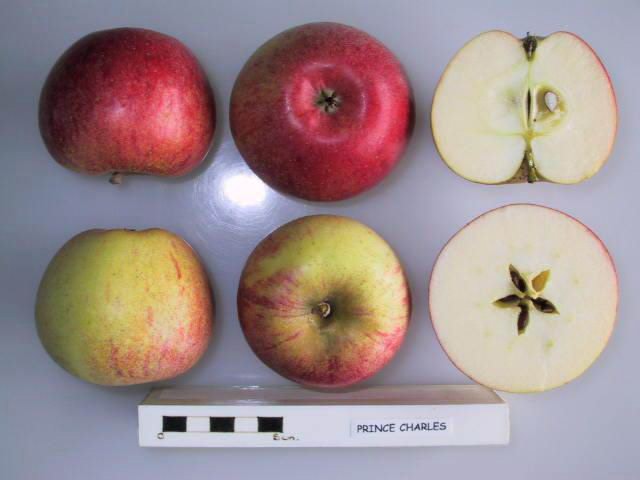2C - Fruit (Part one)
Certain types of British fruit are widely recognised as being among the best. Here are some of the main examples.
Apples
What could be more English? There is Newton (1643 – 1727), sitting under a tree in his mother’s orchard, contemplating his navel, when an apple drops from the tree leading him to formulate his theory of gravity, upon which all modern physics and astrophysics is based. The story is probably apocryphal but the tree is still standing in Woolsthorpe Manor, the Newton family home near Grantham, England. I’ve been there and seen the tree.
Seeds from the tree have travelled into space aboard the International Space Station, returned, sprouted and been replanted. More seeds are housed in the Millennium Seed Bank, the UK’s largest, which contains an underground collection of over 2.4 billion seeds from around the world.
Apples are very important to England, in particular. Of the world’s roughly 7,000 apple varieties, 2,500 are found in England, of which many cultivars were first developed in the UK.
Sadly, as we know, the supermarkets select their fruit for everything but flavour – price, perceived ‘attractiveness’, keeping power, high yield, uniformity etc. So, many of these apples are only to be found in specialist shops and farmers’ markets. Also, some have very low yields making them rare even there.
That said, in recent years, there has been a renewed interest in restoring and preserving this rich heritage. Prince Charles has entered the fray by growing 1,000 varieties on his farm at Highgrove, his country residence.
There is a Prince Charles Apple, but it probably has has nothing to do with him; it was bred before he was born. Maybe he was named after the apple!

Probably the most popular English apple is Cox’s Orange Pippin. This variety arose from a (probably accidental) seedling found in 1830, buy Richard Cox, a retired brewer and horticulturist. Today, it accounts for over 50% of the planted acreage of apples in the UK, but due to its need for a relatively cool maritime climate and its susceptibility to various diseases is rarely grown elsewhere. They are best eaten as fresh as possible, preferably from your own tree at the bottom of the garden.
Cox's Orange Pippin - Image by Andreas Rother - licensed under CC BY-SA 2.5
Cox’s apples have been cross-bred with many other varieties to produce new cultivars. There is a list here.
Bramley apples are almost inedible as they are extremely sour, but cook down to a beautiful golden fluffy textured filling for pies, crumbles, tarts apple sauces etc.
Bramley Apples - Image by Marcin Floryan, licensed under CC BY-SA 2.5,
The first Bramley tree grew when, in 1809, a young girl, Mary Ann Brailsford planted some pips in the family garden in Southwell, Nottinghamshire, England. There is no evidence either way whether she ever saw the apples that her pips produced. She died relatively young and certainly never knew her apples were to become famous.
So why aren’t they called Brailsford apples? Well, the family home and garden (including the tree) where she planted them was sold in 1846. The buyer was a local butcher, Matthew Bramley. Ten years later, a local nurseryman, Henry Merryweather asked for permission to take cuttings from the tree and start to sell the fruit. Bramley only agreed on condition that the apples bore his name. Now that is appropriation!
The original tree is still standing, despite being felled by a storm in 1900, and the house, garden and tree have been bought by Nottingham Trent University to preserve them. It can be visited by prior appointment. I've never seen that one.
to be continued





